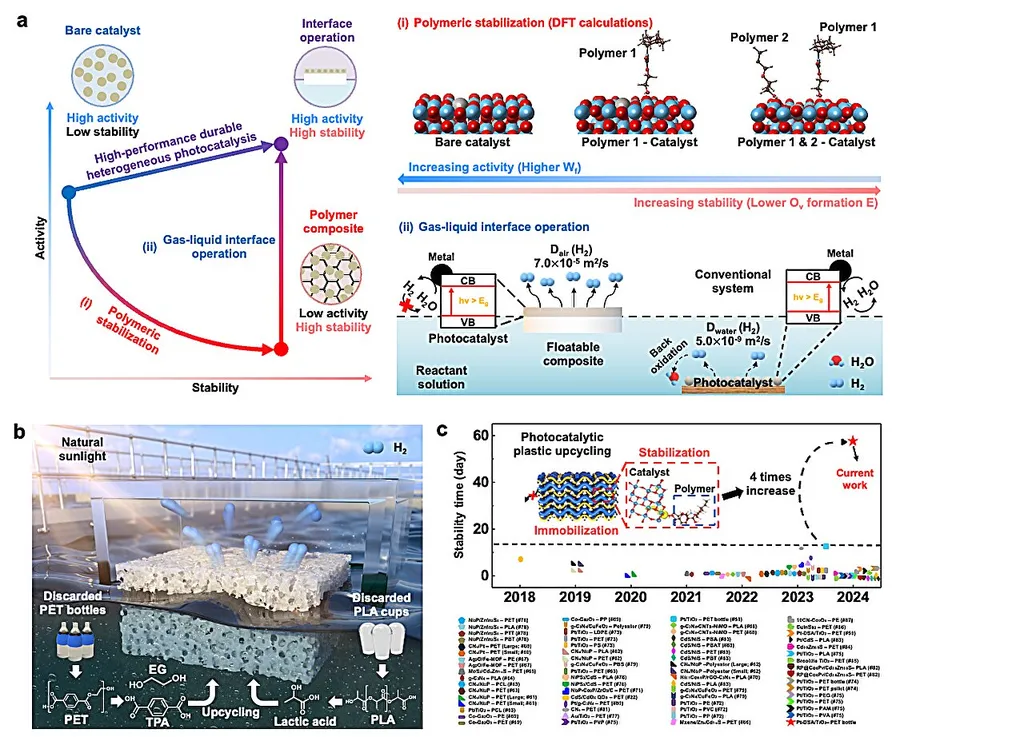In a significant stride towards addressing the global plastic waste crisis, a team of researchers from Kyushu University, Japan, has developed a novel photocatalyst that can convert plastic waste into green hydrogen and valuable organic products using only solar energy. The team, led by Ho Truong Nam Hai and Kaveh Edalati, has introduced a high-entropy oxynitride (HEON) that outperforms conventional catalysts in the photoreforming of polyethylene terephthalate (PET), a common plastic found in bottles and packaging.
The study, published in the journal Nature Communications, demonstrates that the HEON photocatalyst, synthesized by adding nitrogen to a high-entropy oxide (HEO) containing titanium, zirconium, hafnium, niobium, and tantalum, exhibits superior performance in producing hydrogen, formic acid, and acetic acid from PET photoreforming. The researchers attribute this enhanced performance to the unique atomic-scale structure of the HEON, which is distorted by the presence of nitrogen atoms.
The team employed advanced synchrotron light techniques, specifically X-ray absorption near edge structure (XANES) and extended X-ray absorption fine structure (EXAFS), to investigate the electronic structure of the HEON. They found that the nitrogen atoms not only hybridize with oxygen atoms but also induce significant distortions in the local atomic environment. This leads to a narrowing of the bandgap and a reduction in electron-hole recombination, both of which are crucial for improving the photocatalytic activity.
The practical applications of this research for the energy sector are promising. The ability to convert plastic waste into green hydrogen and valuable chemicals using solar energy presents a sustainable and environmentally friendly solution for waste management and energy production. The HEON photocatalyst could be integrated into existing solar energy systems to create a circular economy where plastic waste is transformed into useful resources, reducing the environmental impact of both plastic pollution and fossil fuel consumption.
Moreover, the study highlights the potential of high-entropy materials in catalysis, opening new avenues for the development of efficient and stable catalysts for various energy-related applications. The researchers suggest that the distorted atomic-scale structure of HEONs could be exploited to design catalysts for other photoreforming processes, further expanding the scope of solar-driven chemical transformations.
In summary, the research conducted by Hai, Edalati, and their colleagues represents a significant advancement in the field of photocatalysis and offers a viable solution for addressing the dual challenges of plastic waste management and sustainable energy production. The development of the HEON photocatalyst demonstrates the potential of innovative materials and technologies to drive the transition towards a more sustainable and circular economy.
This article is based on research available at arXiv.

